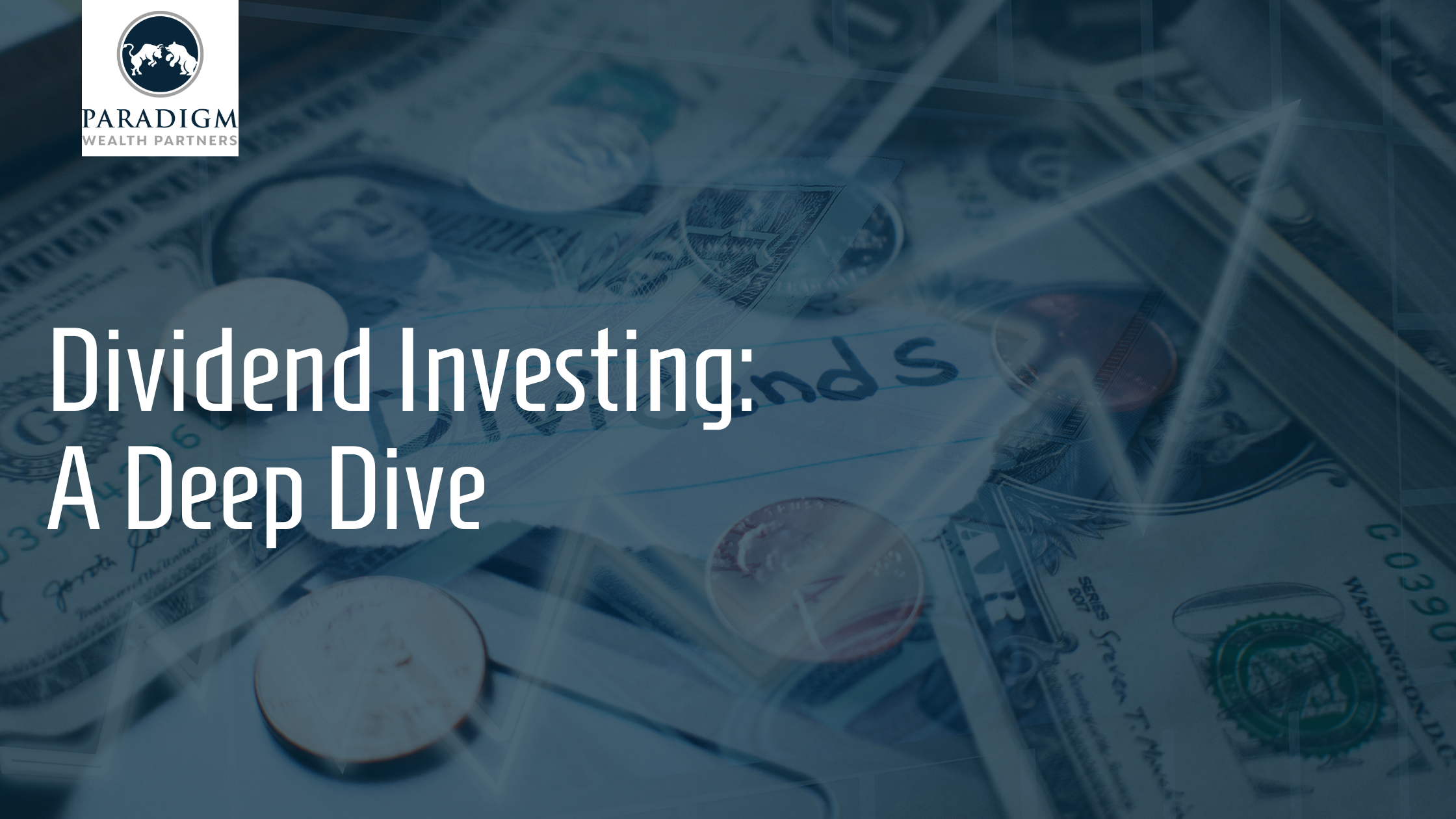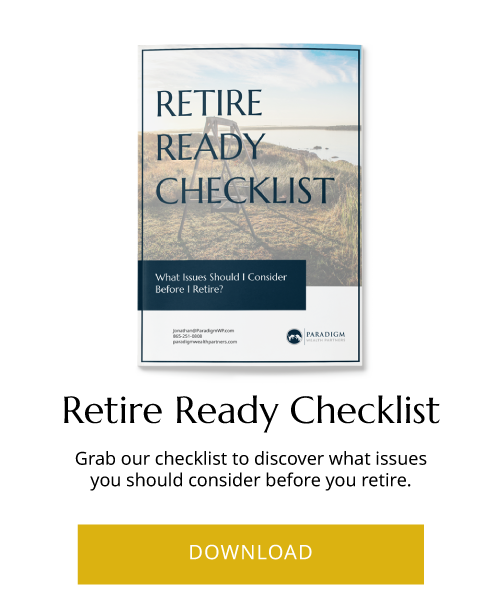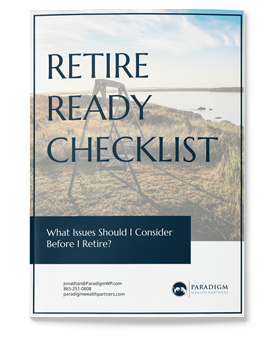Dividend Investing: A Deep Dive
Income investing is an essential part of retirement planning. While there are several ways to do it, dividend investing is perhaps the least talked about. Let’s change that and take a deep dive into dividend investing.
What is a Dividend?
Dividends are periodic payments made to shareholders by a company they own stock in either as an individual stock or inside a mutual fund or ETF. When a company makes a profit, it can choose to divide some of that profit among shareholders in the form of dividends. Dividends can be either a cash payment or reinvested as additional shares of stock.
When you choose to reinvest dividend payments to buy additional shares of stock, your portfolio can benefit from enhanced compounding effects. Essentially, each dividend you reinvest entitles you to more dividend payments in the future.
Not all companies pay dividends. Typically, it’s the board of directors that determines if dividends will be paid. Dividends are usually paid via cash distributions monthly, quarterly, or yearly.
There are a few factors that determine how much an investor can expect to earn in dividends; the company they’ve invested in, how many shares they own, and how often the company decides to pay out dividends. Dividends can fluctuate based on how much profit a company makes and in some cases, broader market and economic conditions.
There are two types of dividends, and the significant difference is the rate at which they’re taxed.
Ordinary Dividends
Ordinary dividends are taxed at the same rate as the shareholder’s ordinary income. The IRS requires taxpayers to report taxable ordinary dividend amounts above $1,500 on Schedule B of Form 1040.
Qualified Dividends
Qualified dividends have a lower capital gains tax rate of no higher than 20%. Depending on your income level and tax-filing status, the IRS taxes qualified dividends are either 0%, 15%, or 20%, just like net capital gains. Each dividend payer of at least $10 will provide you with Form 1099-DIV.
To receive the lower long-term capital gains tax rate i.e., and to be considered qualified, dividends must be paid from a U.S. corporation or qualified international corporation and meet the minimum holding period, which is 60 of the last 121 days beginning 60 days before the ex-dividend date.
Preferred and Special Dividends
There is a hierarchy when it comes to paying out dividends. If a company cuts its dividends, the cuts start at the bottom and work their way up. Bondholders are paid first followed by preferred shareholders, and if there is anything left, it goes to common stockholders.
When things are flush, companies will often pay preferred shareholders first and give them a bigger dividend than they give to the common shareholders.
Special dividends are another type of dividend. They are a one-time dividend payment a company might make after an especially good quarter or if it wants to change its financial structure. Special dividends are usually cash payments and may be larger than regular dividend payments.
Why Companies Pay Dividends
Investors can be attracted and share price can be increased by paying dividends. Dividends can be seen as a sign of a healthy company. If a company has generated enough profit to spend a portion of it on dividend payments, it’s a marker of financial health.
What is Dividend Investing?
Dividend investing sees investors buy stock in companies that regularly make cash payouts to shareholders to reward them for buying the company’s stock. Dividend stocks historically have outperformed the S&P 500 with less volatility as they offer two sources of returns, regular income from the dividend payments and capital appreciation of the stock price.
These are some common terms you’ll see around dividend investing:
- Dividend yield: The annual dividend per share divided by the share price
- Record date: The date a company will check and record who is eligible for a dividend payment
- Ex-dividend date: The cut-off date on or after which if you buy shares, you won’t be eligible for the next payment scheduled.
- Declaration date: The day a company’s board of directors formally announces upcoming dividend payments, including the amount, ex-dividend date, and payment date.
- Payment date: The day dividend checks are sent to shareholders or credited to their brokerage accounts.
What are Dividend Stocks?
Dividend stocks are securities in which the issuing company distributes a regular stream of dividends. They can be bought and sold, and the prices can rise and fall like any other stock. The issuing company distributes a regular stream of dividends from dividend stocks, which can be bought and sold, and their prices can rise and fall like any other stock.
Not all companies pay dividends. Those that do are typically established, stable companies that regularly turn a net profit. They are also companies that don’t need to devote a considerable portion of their profits to innovation. The sectors that typically pay dividends include healthcare and pharmaceuticals, energy, banks, and finance. Dividends are less likely to be paid in sectors like technology.
What Are Dividend Aristocrats?
Dividend aristocrats are companies in the S&P 500 that have increased dividend payments for at least the last 25 years, even during downturns, and have a minimum float-adjusted market capitalization of at least $3 billion and average at least $5 million in daily share trading value for the previous three months. Some of the aristocrats include:
- Procter & Gamble: 66 continuous years of dividend growth
- Coca-Cola: 60 continuous years of dividend growth
- Johnson & Johnson 60 continuous years of dividend growth
- Abbott Laboratories: 50 continuous years of dividend growth
- S&P Global: 49 continuous years of dividend growth
How Does Dividend Investing Help to Fight Inflation?
Inflation, low for decades, has surged recently to its highest levels in forty years. Dividend investing can help insulate you from the impact of inflation.
Dividend stocks, dividend aristocrats, in particular, are generally less volatile than the wider market. Some companies will even increase dividends in response to inflation, and the steady income from dividend payments can help even out a stock’s total return.
Dividends have made up 40% of stock market returns since 1930 and 54% in decades when inflation was high.
The Reliability of Dividends
While no investment is 100% risk-free, dividend stocks are considered safer and more reliable than some other types of investments, especially the dividend aristocrats. But dividends are not guaranteed, not even for the aristocrats.
During the 2008 financial crisis, the dividend yields of some stocks were artificially inflated because of the decline in stock prices. But as the crisis went on and worsened, profits fell off a cliff, and many dividend programs were cut. The cut to the programs then sent stock prices falling, a double loss for dividend investors.
Dividend investors also have to choose between yield and reliability. The dividend stocks that generate the most income for your invested dollar aren’t always the most reliable, and the most reliable may not offer the highest payouts.
The High-Yield Trap
Often, those new to dividend investing will choose stocks that offer the highest dividend yields. High-yield stocks aren’t necessarily bad investments but a high yield can result from a stock’s price falling because of the risk of the dividend being cut.
A yield that seems too good to be true frequently is. There are better ways to choose dividend stocks, keep reading!
How to Assess Dividend Paying Stocks
Some ratios will be helpful when choosing which dividend stocks to include in your portfolio.
Dividend Payout Ratio
The dividend payout ratio measures how much of a company’s profits are paid out as dividends. To calculate a company’s dividend payout ratio, divide the number of dividends it has paid over X period by the number of profits it generated over the same period.
The dividend payout ratio is useful because it can indicate how reliable a company’s dividends are and how much room there is for growth in the future. A high dividend ratio, above 70%, may mean the dividend payout is riskier because it takes up so much of a company’s profit. If profits fall, there may not be enough to continue paying the dividend. Companies with payout ratios below 60% can be a more reliable dividend investment.
Free Cash Flow
Free cash flow is calculated using the company’s statement of cash flows. To calculate free cash flow, subtract a company’s capital expenditures from its cash flow from operations.
Without free cash flow, a company won’t have the money to pay out dividends.
Return on Invested Capital
Return on invested capital is a calculation that can help assess a company’s ability to allocate capital to profitable investments. To calculate ROIC, divide net operating profit after tax by invested capital.
A consistent double-digit ROIC over many years shows a company is profitable and efficient.
Operating Profit Margin
To calculate a company’s operating profit margin, divide its operating profits by its total sales. Operating profits typically represent a company’s earnings before interest and taxes. A higher operating profit margin can be a sign of stability for dividend investors.
Asset Turnover
To calculate asset turnover, divide a company’s total sales by its total assets. This number shows how many dollars of sales each dollar of assets has generated and shows a company’s efficiency.
If a company can generate more sales from its assets, it’s more profitable.
Sales Growth
To calculate sales growth, subtract one period’s revenue from another period’s revenue. The differences are expressed as a percentage of the former. Although profits are what matter the most, sales growth trends can provide information about the stability or volatility of a company’s business model and its ability to continue growing.
Price-to-Earnings Ratio
The P/E ratio is calculated by dividing a company’s stock price by the number of earnings per share generated over 12 months. Historically, the long-run average P/E multiple for the market is about 15. Companies with more stable earnings and faster earnings growth potential typically trade at higher earnings multiples than the general market.
Types of Accounts for Dividend Investing
You can buy individual dividend stocks through a brokerage account or own them inside an ETF or mutual fund. There are ETFs and mutual funds that specifically hold dividend stocks.
For those who want to buy dividend stocks to provide retirement income, an IRA may be the best option.
If you expect your tax rate in retirement to be higher than your current rate, a Traditional IRA may not be the best choice. You’ll avoid paying taxes on the dividends for many years but when you start making withdrawals, you’ll be taxed at ordinary income tax rates.
Buying dividend stocks through a Roth IRA means the dividends can accumulate tax-free and you’ll never pay taxes on them. This may be the best solution if you plan to use dividends as income during retirement and expect your retirement tax rate to be higher than your current rate.
Possible Advantages of Dividend Investing
- A great source of passive income/retirement income
- Safer investment than high-growth stocks
- Can choose to reinvest dividends
- Double benefit of dividends and value appreciation of the stock
- Can help protect you from inflation
- Less prone to market volatility
Possible Disadvantages of Dividend Investing
- Double taxation: You’re essentially taxed twice as a dividend investor. The first taxation happens before you receive your dividend payment because the company issuing them from its net income must pay taxes on its annual earnings and those earnings are where the dividend payments come from. The second taxation happens when you pay personal income tax on the dividends you earn over a given tax year. So in essence, you pay taxes both as a partial owner of the company and as an individual.
- A company can make changes to its dividend policy at any time including cancelling dividend payments entirely.
- Lack of diversification: All investors know that the best way to protect your portfolio is to diversify, the adage of not putting all of your eggs in a single basket. Dividend stocks tend to be clustered in certain industries and sectors. You can correct this by choosing dividend stocks in divergent sectors but it is something you have to do consciously.
If you have questions about dividend investing or any other aspect of financial planning, we’re here to help.
Tracking #453231



